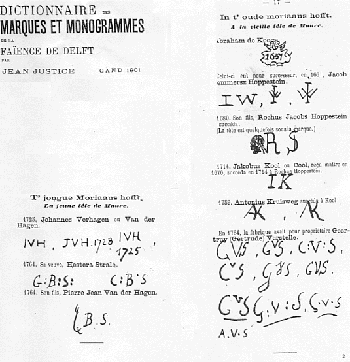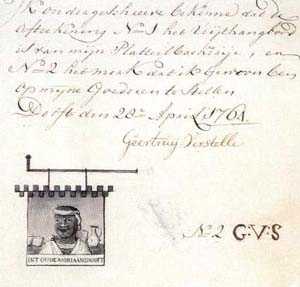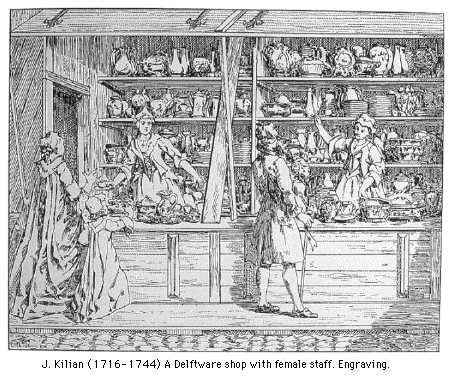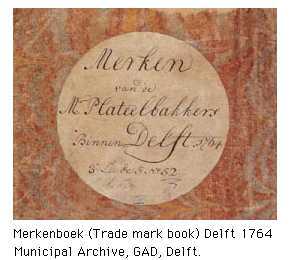 Oude
Moriaanshooft
Oude
Moriaanshooft Oude
Moriaanshooft
Oude
Moriaanshooft20b. Het Oude Moriaanshooft / La vielle tête de Maure (workshop active from 1690 - 1773), Gasthuislaan, south side. 'Names of houses' file mentions it in 1702 "tot de Vest" (near the fortification).
Around 1665 the two workshops Jonge and Oude Moriaanshoofd adjoined each other.
In 1671 Jacob Wemmersz Hoppesteyn became the owner and when he died in 1671 his widow, Jannitge inherited. She then ran the shop with the assistance of her son Rochus Hoppesteyn.
Delftware of the highest quality was made in the Jonge Moriaenshoofd and the Oude Moriaenshoofd, introducing colour designs in 1680.
A precursor of this faience workshop was initially founded in 1658 as faience workshop "Het Moriaanshooft". In 1690 the merged workshops were split into two entities: Oude (Old) Moriaanshooft and Jonge (Young) Moriaanshooft which existed independently of each other. This continued until 1772 when the factories merged into one workshop with one owner.
Masters & apprentices
All masters and apprentices working at this workshop had to be inscribed in the Delft St Luke Guild Book. In 1877 this book was published in a 120 page text by Obreen. In 2002 this text has been scanned and is now available and fully searcheable on this internet site. See the yellow field on top; first click the heading Delft Artists & Patrons and then click Obreen. The full text is in Dutch. Spelling varies; in order to find masters or apprentices of a faience workshop (plattielbackers, plateelbacker, platielbacker) search for the letters "plat".
Delftware Connoisseurship
A serious collector of Delftware will attempt to identify and date the object. On Delft blue plates and other Delftware objects such as jugs, a potters mark may give a first indication. One should always treat potters marks with caution. Marks must be considered as just one indication.

See further info under Jonge Moriaan.

Translation from Trade Mark book 1764: "I the undersigned declare that the drawing nr 1 is the sign of my faience bakery and Nr. 2 is the sign which I am used to put on my goods."

 Full
presentation at http://www.xs4all.nl/~kalden
Email the author at kalden@xs4all.nl
Full
presentation at http://www.xs4all.nl/~kalden
Email the author at kalden@xs4all.nl
All questions about identifying, dating, valuing, buying and selling: please go to www.Aronson.nl.
Notes: Thanks to the Delft Archives Staff for their help and enthusiasm. A well researched two volume book on Delftware is Marion S. van Aken-Fehmers et al, Delfts Aardewerk, Geschiedenis van een nationaal product, published jointly by Waanders, Zwolle & Gemeentemuseum, Den Haag, 1999 (part 1) and 2001 (part 2).
Mark not shown in the 1764 Trade mark book.
Jean Justice, 'Dictionaire des marques et monogrammes de la faience de Delft', Gand/Gent 1901.
How did they make Delft blue faience? text in English
Hoe maakte men Delfts blauw plateel? Tekst in het Nederlands.
Visit The Hague municipal Gemeentemuseum site on Delft Blue.
Launched January 2002. Last update 25 October 2016.